Tribal Profiles
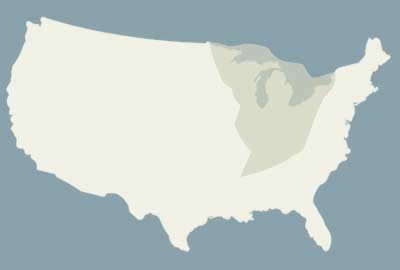
Menominee Indian Tribe of Wisconsin
Click HERE for PDF version.
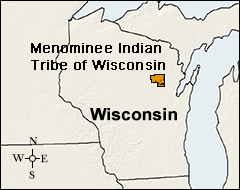
Restoring the Forest with Climate Adapted Trees
Oak wilt, a deadly fungus common throughout forests in the eastern United States, can only be eradicated by cutting down the affected trees and removing or treating their stumps with herbicide. The Menominee Indian Tribe of Wisconsin, located on a heavily wooded area in northeastern Wisconsin, had oak wilt introduced to their land in the 1980’s. Hundreds of small clearings now dot the landscape. The tribe has typically allowed these pockets to revegetate naturally. However, in 2013 the tribe partnered with the Climate Change Response Framework (CCRF), a group that helps managers incorporate climate change considerations into natural resource management. Together they created a plan to repopulate a portion of these areas with trees adapted to a warmer climate. Using a combination of regional data and traditional ecological knowledge (TEK), the tribe is seeing successful regrowth in these experimental plots which are now tailored to future conditions.
150 Years of Sustainable Forestry
The Menominee reservation sits on 235,000 acres of lushly forested land. The forest is unique in that it spans multiple forest cover types and is therefore more diverse than adjacent forests to the north and south. The Menominee Tribe has sustainably managed these lands over the past 150 years. They have nurtured a vital ecosystem while at the same time developing the Menominee Tribal Enterprises (MTE), a profitable timber business owned by the tribe. The tribe has been so successful in cultivating the land that from 1870 to now, standing board feet of timber has increased from 1.3 billion to 1.7 billion. During the intervening years, the tribe has harvested more than 2.25 billion board feet – almost the entire forest twice. The Climate Change Response Framework notes that, “These lands are often held up as a model of forest stewardship because of the long history of sustainable and pioneering forest management.”
In the 1980’s, however, the tribe began to see outbreaks of oak wilt. Tony Waupochick has worked with MTE for almost 25 years. As the Silviculturist Forester, he describes that, “oak wilt is a fungus carried by beetles. Beetles enter a tree when a tree is injured. An injured tree creates a sap shield over the cut which beetles are attracted too. Once a tree is infected with oak wilt, the fungus spreads to its roots and transfers to surrounding trees through the roots. So you then have an expanding pocket of dying trees.”
Once infected, a tree will quickly drop its leaves and die in about two weeks. While climate change does not seem to directly affect the oak wilt fungus, stronger and more frequent storms associated with climate change have accelerated damage to the forest. Over the past ten years, Waupochick says MTE Forest Managers have observed an increase in broken tree limbs due to high winds. This creates inroads for beetles and results in more trees becoming vulnerable to oak wilt.
To stop the spread of oak wilt, the infected tree(s) must be cut down and the stump(s) removed or treated with herbicide. Adjacent trees are treated in the same manner. Waupochick says that the size of the treatment radius depends on the diameter at breast height of the trees; sometimes the tribe has had to remove over an acre of trees stemming from a single infection. Fortunately, much of the time the timber can be salvaged. However, the problem is ramping up and between 2008-2018 almost 1,000 pockets resulting from oak wilt are now scattered across the Menominee land.
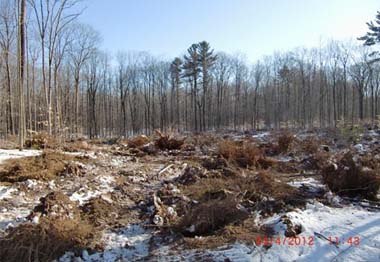
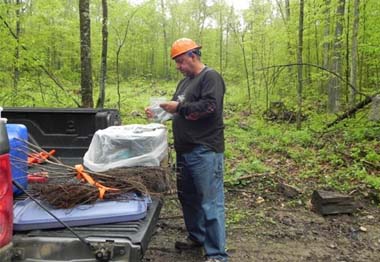
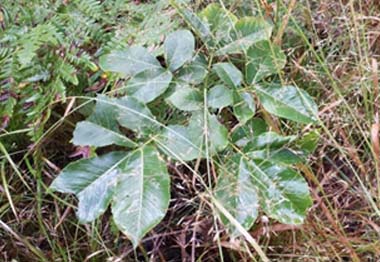
Developing a Climate Change Adaptation Plan for Forest Management
In 2013 the US Forest Service approached the Menominee Tribe with a newly developed set of climate adaptation tools. The USFS was one of several partners that together formed the Climate Change Response Framework. The group had created an Adaptation Workbook that, ‘enables natural resource professionals to consider the potential effects of climate change on forests and to then design actions that can help reduce risk and increase the ability to cope with changing conditions.’
MTE was interested and agreed to partner with CCRF. Waupochick recalls that as the MTE Forest Managers worked through the Adaptation Workbook there were many actions the tribe had put into practice long ago. The tribe actively worked to reduce the risk of forest damage by performing prescribed burns, pruning diseased/injured tree limbs and harvesting at-risk trees. In addition, the tribe targeted biological stressors such as treating for invasive plant species as well as oak wilt. But one area caught their attention. While the Menominee’s forests were already diverse, the tribe decided to further promote diversity by planting tree seedlings adapted to a warming climate. Such trees would be able to withstand the warmer temps that were predicted 30-50 years from now when the trees would reach maturity.
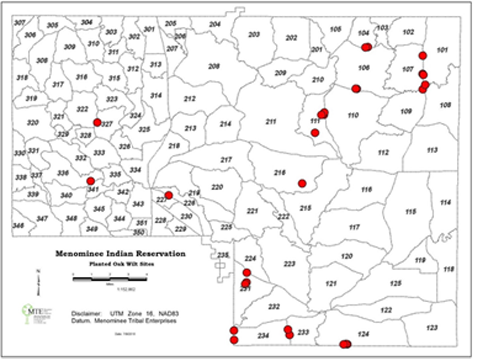
The tribe identified 28 oak wilt sites, and with a grant from the USFS, purchased tree seedlings. Working with CCRF and the Climate Tree Atlas, they selected species that would flourish in their climate now and into the future: white oak, bur oak, black cherry, shagbark hickory, and American elm.
In 2013 they began the first planting. The tribe steered away from the western practice of planting seedlings in rows, instead, relying on traditional ecological knowledge and planting the seedlings in clusters. Moreover, instead of clearing away all potential competitors from the seedlings, the tribe paired each seedling with native grasses, plants, and shrubs. These coordinating plants were selected by MTE Forest Managers and specialized to each plot based on soil conditions, topography, cultural significance, the size of the clearing and how the site was prepared.
Jeff Grignon, who works with MTE’s Cultural Resource Identification and Protection, explains that there is cooperation within plant communities. “Cultural knowledge tells us that trees have communities and need each other to survive. There are connections formed between the trees and the grass and shrubs in the surrounding stands. Basically it’s like our cities, and these communities cooperate together.”
So far MTE has seen success in the areas that have been repopulated. The tribe has observed that tree seedlings paired with grasses and shrubs can grow up to three times faster during their early years compared to trees planted alone. They attribute this to the above and below ground communities cultivated by the coordinating plants. Waupochick comments that MTE is open to the idea of combining tribal/cultural knowledge with western scientific knowledge to increase the efficiency and strength of forest.
MTE will continue to monitor the experimental plots. Waupochick notes that the project was an easy one to gain support for among the MTE team and that it is just the beginning of a longer process. He concludes, ‘In 50 years, if climate change is drastic, we want to be able to say we did something about it.’
References and Resources
- Menominee Tribe of Wisconsin website
- Menominee Tribal Enterprises
- Climate Change Response Framework
- Forest Invasives
- Wikipedia: Menominee
- https://en.wikipedia.org/wiki/Menominee
- Citation: William McDonough and Michael Braungart, Cradle to Cradle; Remaking the Way We Make Things, New York: North Point Press, 2002, p. 88.
- A Practical Approach for Translating Climate Change Adaptation Principles into Forest Management Actions
Project Contact:
Tony Waupochick
Silviculturist Forester
Menominee Tribal Enterprises
715/994-1577
tonyw@mtewood.com
This profile was developed in August, 2019 by Amanda Kapp, Institute for Tribal Environmental Professionals, Northern Arizona University, with financial support from the Bureau of Indian Affairs Tribal Resilience Program. The profile is available on the Tribal Wellbeing for Seven Generations Program website: https://itep.nau.edu/twsgp/tribes/. The tribal profiles featured on the website are intended to be a pathway to increasing knowledge among tribal and non-tribal organizations interested in learning about climate change mitigation and adaptation efforts.
Special thanks to Tony Waupochick and Jeff Grignon for their assistance in developing this profile.
Citation: Kapp, A. (2019) The Menominee Indian Tribe of Wisconsin, August, 2019. Climate Change Program, Institute for Tribal Environmental Professionals, Northern Arizona University.
CONNECT WITH US
Nikki Cooley
Co-Director
Nikki.Cooley@nau.edu
Karen Cozzetto
Manager
Karen.Cozzetto@nau.edu
Your tax deductible donation supports ITEP’s programming efforts.
Please contact us if you would like to contribute to our endowment or for any additional information regarding donations.

